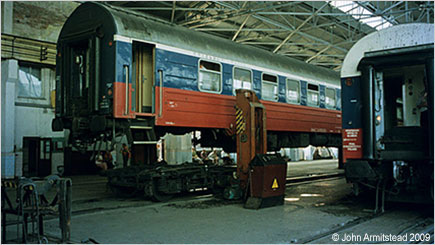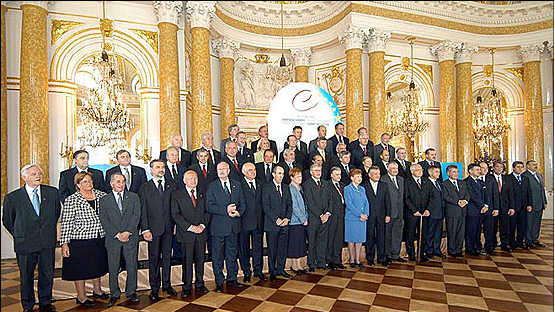Asset Publisher

Fighting against violence
2002-2012
Maud de BOER-BUQUICCHIO

When I campaigned to become Deputy Secretary General of the Council of Europe, there was no formal job description, and I was not expected to have a particular agenda, the primary task being to provide all-round support to the Secretary General. As I crossed the river from the European Court of Human Rights, of which I was the Deputy Registrar at the time, to the Palais de l’Europe to take on the office of Deputy Secretary General, my baggage consisted of little more than a paperweight which consisted of two superposed duck-shaped stones made by one of my children, and the experience of 33 intense years of serving the cause of human rights in Europe.
The many years I had spent digging into the cases brought to the European Commission and Court of Human Rights by persons complaining of human rights violations had certainly left their imprint on the person I was then and still am today. As a “case lawyer” at the Commission, I had spent hours ploughing through sometimes frivolous complaints, but most often harrowing descriptions of injustice. This was solitary work, but I never felt really alone. When reading the files, I tried to put myself in the place of the people I was reading about, and my office was filled with their presences, their stories, even their voices at times. Indignation and compassion were emotions that I had to manage and transform into sharp legal analysis, into answers that might convince commissioners and judges to implement justice and, above all, into ways that would prevent similar cases in the future. I was particularly motivated when the victims of violence and of abuse were children and women. My exposure to the many dimensions of human rights during my career at the Commission and the Court no doubt shaped my vision of the Council of Europe mission as a whole.
As I walked across that bridge, I had two ideas in mind. I was firmly convinced that a holistic approach was required to reinforce the general effectiveness of human rights protection in Europe, an approach which included the political level. This meant I had to avoid leaving the Court in a vacuum; it meant I had to emphasise the role of preventative measures; and it also implied that I had to ensure the execution of judgments, the supervision of which was in the hands of the Organisation’s executive body, the Committee of Ministers.
I was also convinced that in order to be relevant and efficient, the Council of Europe had to play to its strengths to its conventions and its treaty mechanisms, of which the European Convention of Human Rights was a shining example. This is something that I believe still holds true today. The dilemma was and still is to find the right balance between guaranteeing the implementation of existing treaties and drawing up new ones to address remaining or emerging challenges.
When I took office as Deputy Secretary General in 2002, the mood in the Committee of Ministers was definitely in favour of the first idea. As for the second, I was convinced that despite the dilemma it posed, new treaties were definitely needed to combat violence against women and children.
In 1997, the Final Declaration and Plan of Action adopted at the Summit of Heads of State and Government of the Council of Europe in Strasbourg had indeed referred to the need to invest in the elimination of violence against women and prevent and respond to sexual exploitation of both women and children. Despite a growing awareness of the importance of combating these scourges, initiatives had stagnated, however, detailed and binding standards were still lacking and progress was slow. So I did the obvious thing: I decided to use my new privileged position to convene, to mobilise, to convince and influence, and finally push for progress in these areas. And as I walked across that bridge I was determined to do so consistently and systematically, using my contacts with governments, parliaments, local authorities, civil society, human rights defenders, international organisations and the media to this end.
Action against trafficking in human beings
“Human beings are not for sale” was the first slogan I started hammering at all international and national arenas. Since the early 1990s and for more than a decade, the Steering Committee on gender equality had invested considerable effort and developed strong expertise in preventing and combating the sexual exploitation of women, and had thus laid a solid foundation for the drafting of a new treaty. In 2002, the Parliamentary Assembly called for a campaign against trafficking in women. A year later, the Assembly would recommend the preparation of a convention against trafficking in human beings generally.
My goal to promote the drafting of a convention that would keep the rights of victims at its core became a crusade that took me to many places: to the Ministerial Conferences on Gender Equality in Skopje (2003) and in Baku (2004), to the OSCE in Vienna, to the United Nations in New York and Geneva, to the European Union in Brussels and to many other European capitals as well.
Negotiations on the draft convention were far from easy and often needed a bit of a push, which I was happy to provide. The expert group mandated to prepare the text had to hold eight meetings before they could agree on a draft that would be sent to the Parliamentary Assembly for an opinion and then to the Committee of Ministers for adoption. Much water flowed under the bridge during those protracted negotiations. And when discussions became stormy, as they sometimes did, I feared the project might drown. It was at the time when the European Union was rapidly enlarging and a common position held by all member states had begun to weigh really heavily at the negotiation tables. A lot of persuasion was needed before an issue such as the granting of residence permits to victims of trafficking could be adopted. And even then diplomacy and persistence were required to overcome attempts to exclude the European Union member states from the monitoring mechanisms. The contribution of parliamentarians and civil society helped immensely to keep some of the most important provisions in the text. And so did the endless efforts of many colleagues in the Secretariat that steered and supported this work.
We were really happy to celebrate the adoption of a landmark treaty, the Convention on Action against Trafficking in Human Beings, at the Warsaw Summit in 2005, which today counts 46 states parties and has become a reference worldwide.
If you wish to continue your reading, you may buy the book "Europe: a human enterprise".
Maud de BOER-BUQUICCHIO
A lawyer by education, Maud joined the Council of Europe in 1969 and worked in different capacities in the human rights protection mechanism set up under the European Convention on Human Rights. In 1998, she was elected Deputy Registrar of the European Court of Human Rights. Between 2002 and 2012, she served as Deputy Secretary General of the Council of Europe, the first woman elected to this post. She left the Council in 2012 and is now President of the European Federation for Missing and Exploited Children (Missing Children Europe) and on 8 May 2014 she was appointed United Nations Special Rapporteur on the sale of children, child prostitution and child pornography.




